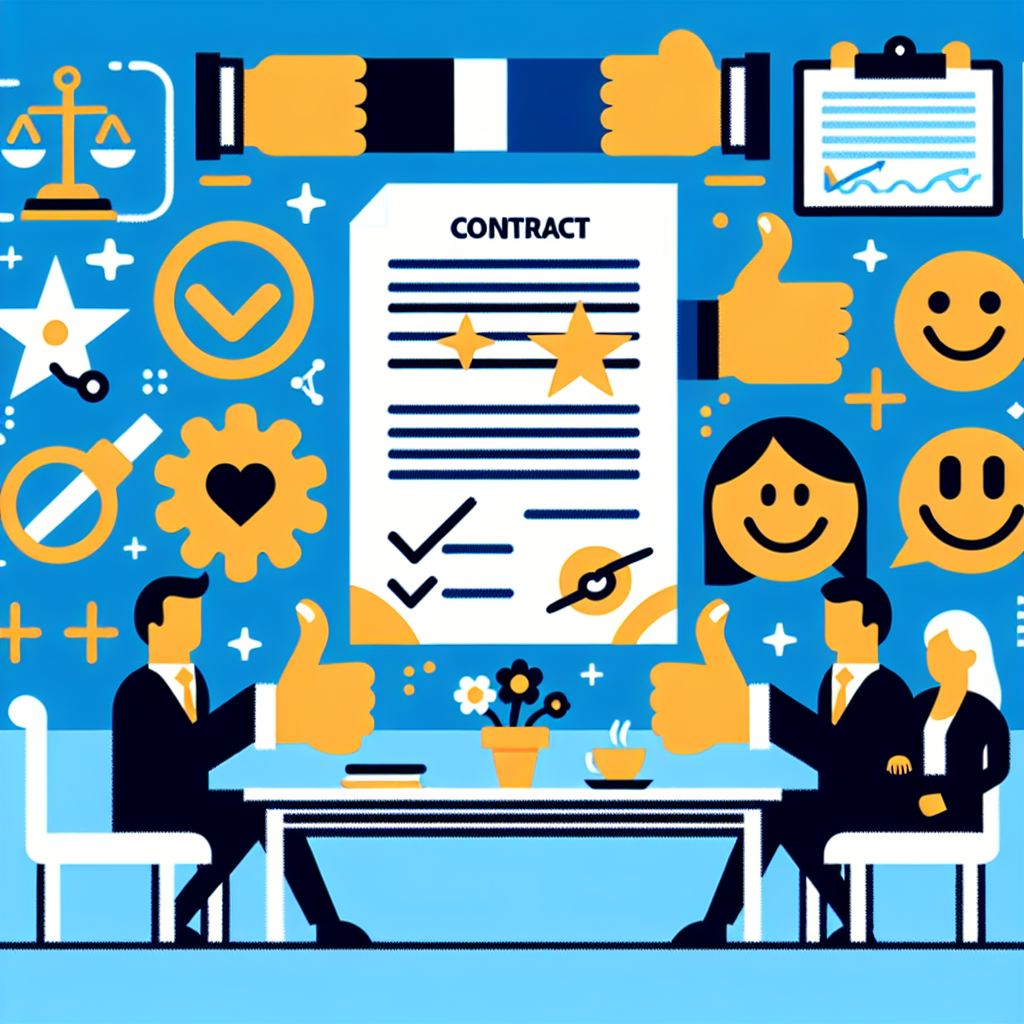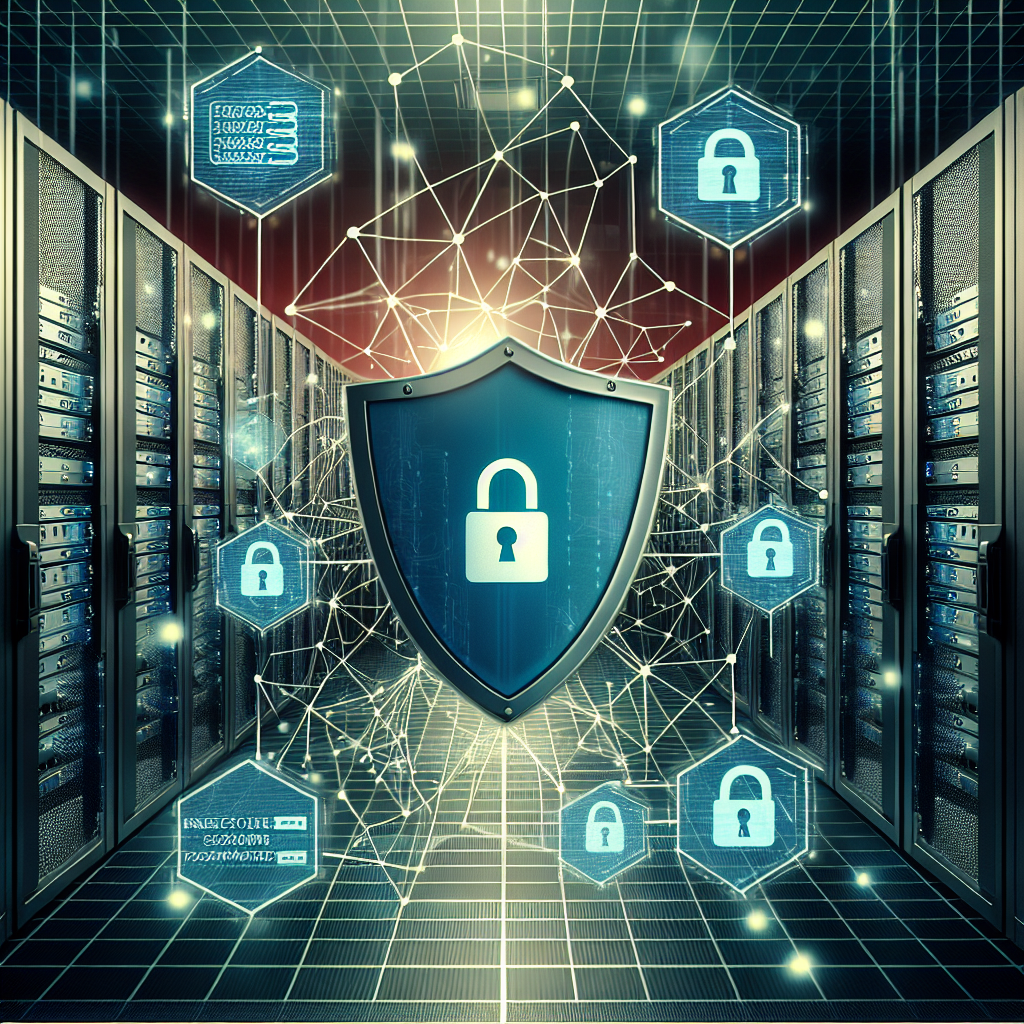Your cart is currently empty!
Tag: Maintaining

Business Continuity in Times of Crisis: Strategies for Maintaining Operations
Business Continuity in Times of Crisis: Strategies for Maintaining OperationsIn today’s fast-paced and ever-changing business environment, organizations must be prepared to face unexpected challenges and crises that can disrupt their operations. Whether it’s a natural disaster, cyberattack, or global pandemic, having a solid business continuity plan in place is essential to ensuring the survival and success of a company.
Business continuity refers to the process of developing and implementing strategies to ensure that essential business functions can continue to operate during and after a crisis. This involves identifying potential risks, developing contingency plans, and implementing measures to minimize disruption and ensure the smooth functioning of the organization.
One of the key elements of a successful business continuity plan is having a clear understanding of the potential risks that could impact the organization. This includes conducting a thorough risk assessment to identify potential threats, such as natural disasters, supply chain disruptions, or cyberattacks. By understanding these risks, businesses can develop strategies to mitigate them and minimize their impact on operations.
Another important aspect of business continuity is developing a comprehensive crisis management plan. This plan should outline the roles and responsibilities of key personnel during a crisis, as well as the steps that need to be taken to ensure the safety of employees and the continuity of business operations. It should also include communication strategies to keep stakeholders informed and updated on the situation.
In times of crisis, organizations must be prepared to adapt and make quick decisions to ensure the continuity of their operations. This may involve implementing remote work arrangements, shifting production to alternative locations, or sourcing new suppliers to replace those that have been disrupted. By being flexible and proactive, businesses can minimize the impact of a crisis and ensure that they can continue to serve their customers and meet their obligations.
It’s also important for organizations to regularly test and update their business continuity plans to ensure that they are effective and up-to-date. This may involve conducting tabletop exercises, simulation drills, or scenario planning to identify gaps and areas for improvement. By continuously reviewing and refining their plans, businesses can ensure that they are prepared to face any challenge that comes their way.
In conclusion, business continuity is essential for organizations to survive and thrive in times of crisis. By developing a comprehensive plan, identifying potential risks, and implementing strategies to ensure the smooth functioning of operations, businesses can minimize the impact of disruptions and continue to serve their customers effectively. By prioritizing business continuity, organizations can build resilience and ensure their long-term success in an increasingly uncertain world.

Business Continuity Best Practices: Tips for Maintaining Operations in a Crisis
In today’s unpredictable world, businesses face a myriad of threats that can disrupt their operations at any moment. From natural disasters to cyber-attacks to pandemics, it’s essential for organizations to have a solid business continuity plan in place to ensure they can maintain operations in the face of a crisis.Here are some best practices for maintaining business continuity in a crisis:
1. Develop a comprehensive business continuity plan: The first step in ensuring your business can weather any storm is to create a detailed business continuity plan. This plan should outline the steps your organization will take to ensure critical operations can continue in the event of a crisis. It should include protocols for communication, backup systems, and alternative work arrangements.
2. Conduct a risk assessment: Understanding the potential threats your business faces is crucial to developing an effective business continuity plan. Conduct a thorough risk assessment to identify the most likely scenarios that could disrupt your operations, and develop strategies to mitigate those risks.
3. Establish a crisis management team: In the event of a crisis, it’s essential to have a dedicated team in place to manage the situation. This team should be responsible for coordinating the response, communicating with stakeholders, and implementing the business continuity plan.
4. Regularly test and update your plan: A business continuity plan is only effective if it’s regularly tested and updated. Conduct regular drills and exercises to ensure your team is prepared to respond to a crisis, and make updates to the plan as needed based on lessons learned.
5. Maintain open lines of communication: Communication is key in a crisis situation. Ensure that you have multiple channels for communicating with employees, customers, suppliers, and other stakeholders, and keep them informed of any developments as they occur.
6. Implement remote work capabilities: In today’s digital age, many businesses can continue operations remotely in the event of a crisis. Implementing remote work capabilities for your employees can help ensure that critical functions can continue even if your physical office is inaccessible.
7. Establish relationships with key partners and suppliers: In a crisis, it’s essential to have strong relationships with key partners and suppliers. Establishing these relationships ahead of time can help ensure that you have the support you need to maintain operations when disaster strikes.
By following these best practices, businesses can increase their resilience and ensure they can maintain operations in the face of any crisis. A solid business continuity plan, regular testing and updates, effective communication, and strong relationships with partners and suppliers are all key components of a successful business continuity strategy.

The Role of Data Backup and Recovery in Maintaining Business Continuity
Data is the lifeblood of any modern business. From customer information to financial records, data plays a crucial role in day-to-day operations and decision-making. However, data is vulnerable to a variety of threats, including hardware failure, human error, cyberattacks, and natural disasters. Without a reliable backup and recovery plan in place, businesses risk losing valuable data and experiencing significant downtime, which can have a devastating impact on their operations.Data backup and recovery are essential components of maintaining business continuity. Backup refers to the process of creating copies of data and storing them in a separate location, while recovery involves restoring data from these backups in the event of a data loss incident. By regularly backing up data and having a solid recovery plan in place, businesses can minimize the risk of data loss and ensure that they can quickly recover from any disruptions.
There are several key reasons why data backup and recovery are crucial for maintaining business continuity. Firstly, data loss can have serious financial implications for a business. According to a study by the Ponemon Institute, the average cost of a data breach in 2020 was $3.86 million. By having a robust backup and recovery plan in place, businesses can avoid costly downtime and potential loss of revenue.
Secondly, data backup and recovery are essential for maintaining customer trust and loyalty. In today’s digital age, customers expect businesses to protect their personal information and ensure that it is secure. A data breach or loss can erode customer trust and damage a business’s reputation. By safeguarding data through regular backups and quick recovery processes, businesses can demonstrate their commitment to data security and build trust with their customers.
Furthermore, data backup and recovery can help businesses comply with regulatory requirements. Many industries have strict regulations governing the protection of sensitive data, such as the Health Insurance Portability and Accountability Act (HIPAA) in the healthcare sector and the General Data Protection Regulation (GDPR) in the European Union. By implementing a comprehensive backup and recovery plan, businesses can ensure that they are in compliance with these regulations and avoid potential fines and penalties.
In conclusion, data backup and recovery play a critical role in maintaining business continuity. By safeguarding data, businesses can minimize the risk of data loss, protect their finances, maintain customer trust, and comply with regulatory requirements. Investing in a reliable backup and recovery solution is essential for any business looking to protect its valuable data and ensure that it can quickly recover from any disruptions.

Proactive Maintenance: The Secret to Maintaining Peak Performance in Your Facility
In today’s fast-paced world, facility managers are constantly under pressure to ensure that their buildings are operating at peak performance. This can be a daunting task, especially when faced with aging infrastructure, limited resources, and increasing demands from tenants and stakeholders. However, there is a solution to this challenge – proactive maintenance.Proactive maintenance is a preventative approach to facility management that focuses on identifying and addressing potential issues before they become major problems. By implementing a proactive maintenance program, facility managers can significantly reduce downtime, extend the lifespan of equipment, and ultimately save time and money in the long run.
One of the key benefits of proactive maintenance is that it allows facility managers to schedule maintenance tasks at convenient times, rather than waiting for a breakdown to occur. This not only minimizes disruptions to building operations but also helps to avoid costly emergency repairs. By staying ahead of maintenance issues, facility managers can ensure that their buildings are always running smoothly and efficiently.
Another advantage of proactive maintenance is that it can help to improve the overall safety and security of a facility. By regularly inspecting equipment and systems, facility managers can identify potential hazards and address them before they pose a risk to occupants. This proactive approach can prevent accidents and injuries, as well as protect the reputation of the facility.
In addition to improving operational efficiency and safety, proactive maintenance can also have a positive impact on the environment. By keeping equipment well-maintained and running efficiently, facility managers can reduce energy consumption and minimize waste. This not only helps to lower operating costs but also demonstrates a commitment to sustainability and corporate responsibility.
To implement a successful proactive maintenance program, facility managers should start by conducting a thorough assessment of their building’s systems and equipment. By identifying potential areas of concern and developing a comprehensive maintenance plan, facility managers can prioritize tasks and allocate resources effectively. Regular inspections and routine maintenance checks should be scheduled to ensure that equipment is functioning properly and to address any issues before they escalate.
By embracing proactive maintenance, facility managers can take control of their building’s performance and ensure that it operates at peak efficiency. With a proactive approach to maintenance, facilities can minimize downtime, reduce costs, and create a safe and sustainable environment for occupants. Investing in proactive maintenance is not only a smart business decision but also a key strategy for long-term success in facility management.

Navigating Uncertainty: Tips for Maintaining Business Continuity in a Changing Landscape
In today’s fast-paced and ever-changing business landscape, uncertainty is a constant challenge that companies must navigate in order to maintain business continuity. Whether it’s economic fluctuations, technological advancements, or global crises, businesses must be prepared to adapt and pivot in order to survive and thrive.One of the key strategies for maintaining business continuity in the face of uncertainty is to stay agile and flexible. This means being able to quickly adjust to changing circumstances and make decisions on the fly. By having a nimble mindset and a willingness to embrace change, companies can better navigate uncertainty and come out on top.
Another important tip for maintaining business continuity in a changing landscape is to have a solid contingency plan in place. This means having a clear roadmap for how to respond to various scenarios, whether it’s a sudden drop in revenue, a supply chain disruption, or a cybersecurity breach. By having a plan in place, companies can minimize the impact of unexpected events and ensure that operations continue to run smoothly.
Communication is also key when it comes to maintaining business continuity in uncertain times. Keeping employees, customers, and stakeholders informed about any changes or disruptions can help to build trust and confidence in the company’s ability to weather the storm. By being transparent and proactive in their communication efforts, companies can help to mitigate any potential negative impacts on their business.
Finally, it’s important for companies to stay informed and be proactive in monitoring the external environment for any potential threats or opportunities. This means staying up-to-date on industry trends, regulatory changes, and market developments in order to anticipate and respond to any potential challenges. By staying informed and being proactive, companies can better position themselves to navigate uncertainty and ensure their long-term success.
In conclusion, navigating uncertainty is a challenge that all businesses must face at some point. By staying agile, having a solid contingency plan, communicating effectively, and staying informed, companies can better maintain business continuity in a changing landscape. By embracing change and being prepared for the unexpected, companies can position themselves for long-term success in an ever-evolving business environment.

Best Practices for Maintaining Business Continuity During Uncertain Times
In today’s fast-paced and ever-changing business landscape, it is more important than ever for companies to have a solid plan in place to maintain business continuity during uncertain times. Whether it be a natural disaster, a global pandemic, or an economic downturn, having a plan in place can help companies weather the storm and come out stronger on the other side.Here are some best practices for maintaining business continuity during uncertain times:
1. Develop a comprehensive business continuity plan: The first step in maintaining business continuity during uncertain times is to develop a comprehensive business continuity plan. This plan should outline how your company will respond to various scenarios, including natural disasters, cyber attacks, and pandemics. It should also include a communication plan for keeping employees, customers, and stakeholders informed during a crisis.
2. Test your plan regularly: Once you have developed a business continuity plan, it is important to test it regularly to ensure that it is effective. This can include conducting tabletop exercises, simulating different crisis scenarios, and evaluating the effectiveness of your communication plan.
3. Identify critical business functions: During a crisis, it is important to identify which business functions are critical to your company’s operations. By prioritizing these functions, you can ensure that they receive the necessary resources and attention during a crisis.
4. Implement remote work policies: In today’s digital age, remote work has become increasingly common. By implementing remote work policies, you can ensure that your employees can continue to work from home during a crisis, reducing the impact on your company’s operations.
5. Maintain strong relationships with suppliers and vendors: During uncertain times, it is important to maintain strong relationships with your suppliers and vendors. By working closely with them, you can ensure that your supply chain remains intact and that you have access to the resources you need to keep your business running smoothly.
6. Stay informed and adapt quickly: In uncertain times, it is important to stay informed about the latest developments and adapt quickly to changing circumstances. By staying ahead of the curve, you can position your company for success and minimize the impact of a crisis on your business.
In conclusion, maintaining business continuity during uncertain times requires careful planning, regular testing, and the ability to adapt quickly to changing circumstances. By following these best practices, companies can weather the storm and come out stronger on the other side.

Remote Monitoring: A Key Tool for Managing and Maintaining Infrastructure
Remote monitoring is a crucial tool for managing and maintaining infrastructure in today’s fast-paced world. With the increasing complexity of infrastructure systems and the need for real-time monitoring and management, remote monitoring has become an essential part of any organization’s infrastructure management strategy.Remote monitoring allows organizations to keep a close eye on their infrastructure systems from anywhere in the world. By using a combination of sensors, cameras, and other monitoring devices, organizations can gather real-time data on the performance and health of their infrastructure. This data can then be analyzed and used to make informed decisions about maintenance, upgrades, and troubleshooting.
One of the key benefits of remote monitoring is its ability to provide early warning of potential issues before they escalate into major problems. By monitoring key performance indicators and analyzing trends in the data, organizations can identify issues before they impact operations or cause downtime. This proactive approach to infrastructure management can save time and money by preventing costly repairs and downtime.
Remote monitoring also allows organizations to optimize the efficiency of their infrastructure systems. By monitoring performance metrics such as energy consumption, temperature, and equipment utilization, organizations can identify opportunities for improvement and make adjustments to maximize efficiency. This can lead to cost savings, reduced energy consumption, and increased productivity.
In addition to managing and maintaining infrastructure, remote monitoring can also improve security and compliance. By monitoring access control systems, surveillance cameras, and other security devices, organizations can ensure the safety of their infrastructure and protect against security threats. Remote monitoring can also help organizations comply with regulatory requirements by providing real-time data on key performance indicators and ensuring that systems are operating within specified parameters.
Overall, remote monitoring is a key tool for managing and maintaining infrastructure in today’s digital age. By providing real-time data, early warning of potential issues, and opportunities for optimization, remote monitoring can help organizations ensure the reliability, efficiency, and security of their infrastructure systems. With the increasing complexity of infrastructure systems and the need for real-time monitoring and management, remote monitoring is an essential tool for any organization looking to stay ahead of the curve.

Why Service Level Agreements are Essential for Maintaining Customer Satisfaction
Service Level Agreements (SLAs) are essential for maintaining customer satisfaction in any business. An SLA is a contract between a service provider and a customer that outlines the level of service that is expected to be provided. This agreement sets clear expectations for both parties and helps to ensure that the service provider meets the needs and requirements of the customer.One of the main reasons why SLAs are essential for maintaining customer satisfaction is that they help to establish clear communication and accountability. By clearly outlining the services that will be provided, the timeframe in which they will be delivered, and the metrics that will be used to measure performance, SLAs help to prevent misunderstandings and ensure that both parties are on the same page.
Additionally, SLAs help to set realistic expectations for both the service provider and the customer. By clearly defining the level of service that will be provided, customers know exactly what to expect and can hold the service provider accountable if those expectations are not met. This helps to build trust and confidence in the relationship between the two parties.
SLAs also help to improve the overall quality of service that is provided. By setting clear performance metrics and standards, service providers are motivated to deliver high-quality services in order to meet or exceed the terms of the agreement. This leads to improved customer satisfaction and loyalty, as customers are more likely to be satisfied with the level of service that they receive.
Furthermore, SLAs help to identify and address any issues or problems that may arise during the course of the service agreement. By including provisions for problem resolution and escalation procedures in the SLA, both parties can work together to quickly resolve any issues that may arise and ensure that the level of service is maintained.
In conclusion, Service Level Agreements are essential for maintaining customer satisfaction in any business. By establishing clear communication, setting realistic expectations, improving service quality, and addressing issues in a timely manner, SLAs help to build trust and confidence in the relationship between service providers and customers. Businesses that implement SLAs are more likely to meet the needs and requirements of their customers, leading to increased satisfaction and loyalty.

Best Practices for Maintaining a Secure IT Infrastructure
In today’s digital age, maintaining a secure IT infrastructure is more important than ever. With cyber threats constantly evolving, it’s crucial for businesses to stay ahead of potential attacks by implementing best practices for security. Here are some tips for maintaining a secure IT infrastructure:1. Regularly update software and hardware: Keeping your software and hardware up to date is essential for preventing vulnerabilities that hackers can exploit. Make sure to install security patches and updates as soon as they become available.
2. Implement strong password policies: Enforcing strong password policies is a simple yet effective way to enhance security. Require employees to create complex passwords and change them regularly. Consider implementing multi-factor authentication for an added layer of protection.
3. Conduct regular security audits: Regular security audits can help identify potential vulnerabilities in your IT infrastructure. Conducting penetration testing and vulnerability assessments can help you pinpoint weaknesses and address them before they are exploited by cybercriminals.
4. Educate employees on security best practices: Human error is one of the leading causes of security breaches. Educate your employees on security best practices, such as not clicking on suspicious links or attachments, using secure Wi-Fi networks, and reporting any suspicious activity to the IT department.
5. Backup data regularly: Data backups are crucial for ensuring business continuity in the event of a security breach or data loss. Make sure to regularly backup your data and store it in a secure location, either on-premises or in the cloud.
6. Monitor network traffic: Monitoring network traffic can help you detect and respond to potential security threats in real-time. Use intrusion detection systems and security information and event management (SIEM) tools to monitor network activity and identify any suspicious behavior.
7. Limit access to sensitive data: Restricting access to sensitive data is essential for preventing unauthorized access. Implement role-based access controls to ensure that employees only have access to the data and systems they need to perform their job duties.
By following these best practices for maintaining a secure IT infrastructure, businesses can reduce the risk of cyberattacks and protect their sensitive data. Investing in security measures now can help prevent costly data breaches in the future and safeguard your business’s reputation.
Troubleshooting & Maintaining PCs All-in-One For Dummies (For Dummies (Computer/Tech))
Price:$44.99– $24.11
(as of Jan 25,2025 10:15:26 UTC – Details)From the brand




Dummies makes intimidating topics easy to understand and helps you feel more confident in applying what you do know and discovering what you don’t. From finding a furry friend, contemplating a career change, bringing balance to your mind and body, mastering that new Mac, and everything in between, Dummies makes learning easy.
Shop Go-To Gadgets
Shop Go-To Gadgets
Shop Go-To Gadgets
Shop Go-To Gadgets
Shop Go-To Gadgets
Shop Go-To Gadgets
Shop Go-To Gadgets
Publisher : For Dummies; 4th edition (March 3, 2021)
Language : English
Paperback : 464 pages
ISBN-10 : 1119740304
ISBN-13 : 978-1119740308
Item Weight : 2.31 pounds
Dimensions : 7.3 x 1.2 x 9.1 inches
Are you tired of dealing with computer issues and not knowing where to start? Look no further than “Troubleshooting & Maintaining PCs All-in-One For Dummies”! This comprehensive guide covers everything you need to know about keeping your PC running smoothly and solving any problems that may arise.From basic maintenance tasks like cleaning your computer and updating software, to more advanced troubleshooting techniques for diagnosing hardware and software issues, this book has got you covered. Whether you’re a novice computer user or a seasoned tech pro, you’ll find valuable tips and tricks to keep your PC running at its best.
Don’t let computer problems slow you down – pick up “Troubleshooting & Maintaining PCs All-in-One For Dummies” today and take control of your PC!
#Troubleshooting #Maintaining #PCs #AllinOne #Dummies #Dummies #ComputerTech,pc

